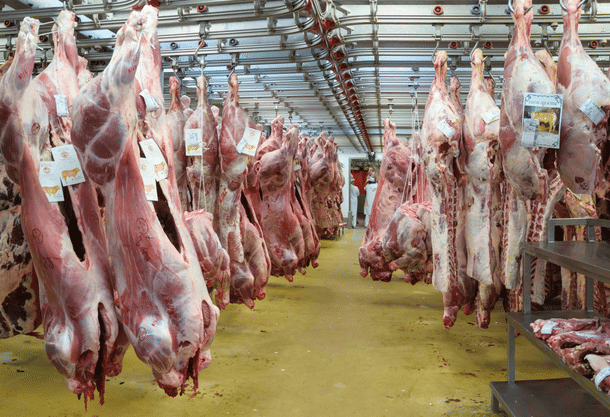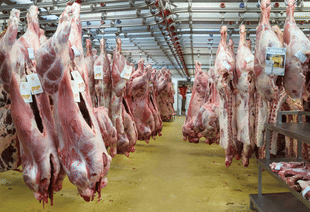Politics
Kerala Should Look To Beef Up Native Cattle Breeds Rather Than Cry Foul Over The Ban
Balakumar Somu
Jun 08, 2017, 04:55 PM | Updated 04:55 PM IST
Save & read from anywhere!
Bookmark stories for easy access on any device or the Swarajya app.


Unless we stand together and oppose this anti-federal, anti-democratic and anti-secular move, it may mark the beginning of a series of similar measures aimed at destroying the federal democratic fabric and secular culture of our country.Pinarayi Vijayan, Chief Minister, Kerala, in a letter to the Chief Ministers of other states
The Ministry of Environment, Forest and Climate Change issued a notification on 23 May 2017 defining a new set of rules and regulations for the livestock markets. The Prevention of Cruelty to Animals (Regulation of Livestock Markets) Rules, 2017, as it has been named, has a wide set of rules and regulations for the management of animal markets in the country.
As soon as the ministry issued the notification, voices of protest rose from all corners of the country, with the loudest and strongest opposition coming from Kerala. Many were intrigued to see the state, which has one of the least cattle densities among the major states, rise so strongly in protest against the new rules. But it is no surprise because Kerala is one of the top producers of beef and carabeef (buffalo meat) as well as a top consumer.
The nation came in for a rude shock and was visibly disgusted when some youth congress members slaughtered a cow in public and circulated the video, which went viral on the social media. In a country where a majority of the population reveres the cow, this mindless, gruesome act did not help their cause; neither do the ‘beef-festivals’ being organised in protest.
Prevention of Cruelty to Animals (Regulation of Livestock Markets) Rules, 2017
The PCA (Regulation of Livestock Markets) 2017 defines rules and regulations in two broad sections:
a) It mandates the constitution of ‘Animal Market Committees’ for the management of all the markets in the district and a ‘District Animal Market Monitoring Committee’ for regulating the markets in each district. It lays down a broad set of guidelines for the facilities to be provided and on ways of treating animals in the market. It also defines a set of rules and regulations for the buyers and sellers of animals.
b) It defines a set of ‘prohibited practices that are cruel and harmful’, a set of rules defining how ‘not’ to treat animals.
Some of these rules and regulations have been the bone of contention, with the most controversial one being Section 22, which lists a set of ‘restrictions on the sale of cattle’. It requires the ‘seller’ to furnish a written declaration stating that the cattle has not been brought to market for sale for slaughter. The ‘buyer’ is expected to provide a written declaration stating that they will not sacrifice the animal for any religious purpose. The minorities, Dalits and those who consume beef are up in arms, saying this rule effectively bans the supply of beef.
The rule that has disturbed Kerala the most is the one that prohibits the seller from selling “the cattle to a person outside the state without the permission as per the state cattle protection or preservation laws”. This is a rule that effectively applies the brakes to the exponential growth of Kerala’s beef production, as most of the cattle that are slaughtered in Kerala are brought in from the neighbouring states.
Today, Kerala is the state that slaughters the maximum number of cattle in India. Kerala’s recognised slaughter houses slaughtered over 11.7 lakh cattle in 2014-15!
Kerala is one of the top meat-consuming states as a majority of Keralites are non-vegetarians with chicken, duck, mutton and beef being the most consumed meat in the state. Beef is part and parcel of Kerala cuisine. Eating beef is not taboo there; in fact, most eateries in the state offer beef as part of the regular menu.
People across religions consume beef in Kerala making it part of the regular household cuisine.
Beef production, export and consumption
Kerala is not just a top consumer but also a top producer of beef. It is one of the top beef and carabeef (buffalo meat) producing states of India, reporting steep growth in the production of beef from cattle and buffaloes during the last decade. In fact, it has seen one of the highest growth in production among major Indian states. The state’s beef and carabeef production has more than tripled from 2009. In 2009-2010, Kerala slaughtered 498,510 cattle and 410,270 buffaloes. In total, Kerala slaughtered 908,780 cattle and buffaloes.
The number of slaughtered animals (cattle and buffalo) zoomed to 1,164,480 cattle and 9,10,660 buffaloes in 2014-15, totaling 2,075,140 animals. The number of cattle and buffalo slaughtered spiralled by almost three times in about five years! Kerala, which was the second top state in 2009-10 for the number of cattle slaughtered, behind Bihar, rose to the top position in 2014-15 with 1,164,480 cattle slaughtered, leaving Bihar a distant second at 510,730.
According to a report, of the 2,100 slaughter houses in Kerala, just over a hundred were authorised, and there were two mechanised slaughter houses.
The volume of beef and carabeef rose from 90,700 tonnes in 2009-10 to 249,020 tonnes in 2014-15.
According to India’s nineteenth Livestock Census, 2012, Kerala has one of the lowest cattle densities, with just about 2,716,687 cattle. It is one of the lowest cattle per household among major Indian states! The cattle population in Kerala was 33.96 lakh in 1996. It declined to 21.22 lakh in 2003 and further down to 17.20 lakh by 2007.
How does Kerala, with one of the lowest cattle populations among top Indian states, manage to stay at the top of the slaughter chart?
It is because Kerala buys cattle from neighbouring states like Tamil Nadu, Karnataka and Andhra Pradesh. This is the real reason why Kerala is up in arms against the ‘should not sell cattle for slaughter’ rule.
The new rules and regulations for animal markets forbid a seller from selling to a person from another state or to a person who might buy for the purpose of slaughter. These two rules strike at the very heart of Kerala’s burgeoning beef industry. While other states of India have a considerable cattle population of their own, Kerala has ended up literally wiping out its native cattle population post-independence because the state restricts breeding of cattle using stud bulls.
Kerala’s disdain for rearing native cattle
It would come as a surprise to many that farmers are prohibited from keeping uncastrated stud bulls in Kerala. The state passed a law, Kerala Livestock Improvement Act, 1961, which practically bans farmers from keeping uncastrated bulls. It was done to prevent farmers from rearing native Indian cattle because they wanted to increase milk production.
Kerala had several indigenous breeds, like Vechur, Kasargode dwarf, Wayanad spotted cattle breed, Vadakara dwarf and a few other minor dwarf breeds of the hilly areas. Most of Kerala’s breeds were dwarfs. Easy to handle, small-sized backyard animals producing about one to three litres of milk. They were low on maintenance, disease-resistant and producing more than enough milk for the household with some to spare for the local markets. The Vechur breed is considered as yielding the maximum amount of milk in the world based on body-mass-to-milk ratio.
The then Kerala government had entered into an agreement with the Swiss government and imported Swiss Brown cows, bulls and semen. They believed that if they cross-bred the local cows with the Swiss Browns, the hybrid progeny would produce more milk. But, because of the ban, almost all of the native cattle breeds became extinct. Service-minded people like Dr Susamma Ipe, who tried to save the local cattle breeds like 'Vechur', were harassed, with cases being filed on them and even being jailed by the Kerala government! This harassment continues to this day.
As a result of the law, today Kerala, which is one of the highest beef-consuming states, has one of the lowest cattle population densities in India.
The protest against the new rules and regulations has been spearheaded by none other than the state’s Chief Minister, Pinarayi Vijayan. He wrote to the chief ministers of all other states, urging them to raise their voice against the centre’s notification as “the ban would affect the livelihood of millions of people, especially those in the farming sector”. Calling on all the chief ministers to “stand together and oppose the anti-federal, anti-democratic and anti-secular move”, he said that it was an attempt to usurp power from the state governments. He even went on to say that the restrictions against cattle trade by the central government “may mark the beginning of a series of similar measures aimed at destroying the federal democratic fabric and secular culture of our country”.
While one would welcome the honourable Chief Minister’s resolve to stand with the farming community and raise his voice to save their livelihood, one wonders why neither the Chief Minister nor any of his Members of Legislative Assembly or Members of Parliament, or local politicians, discuss the draconian Kerala Improvement of Cattle Law, 1961, which forbids farmers from rearing local bulls.
Should Kerala politicians first repeal this anti-farmer Kerala law? Should they not be taking steps to save the local native cattle breeds and improve the cattle density of the state?
When the Supreme Court banned jallikattu, rural sports of Kerala like Sethali (Chithali), Kaalapoottu, bullock cart races too met with the same fate. Farmers from Kerala, like people from the rest of the country, joined the protests against the jallikattu ban when the people of Tamil Nadu fought against it. The struggle was not just to save the cattle of Tamil Nadu but a fight against a ruling that affected the livelihood of farmers all over the country.
After the Tamil Nadu government passed a special law to save jallikattu, a few other states which cared for its farmers, cattle and tradition, like Karnataka and Maharashtra, followed suit. But Kerala didn’t. In fact, Kerala did not even bother to discuss the plight of their cattle and farmers so far.
It is high time that Kerala looked inward and started thinking about its farmers as against their obsession with beef. It is high time that Kerala initiated steps to save its farmers by allowing them to breed the highly profitable native cattle breeds by repealing the draconian Kerala Livestock Improvement Act, 1961, and passing a special law, along the lines of Tamil Nadu’s jallikattu law, to legalise rural traditions and sports like ‘Chithali’ (Sethali) and Kaalapoottu. This will go a long way in rejuvenating the native cattle population of Kerala.





